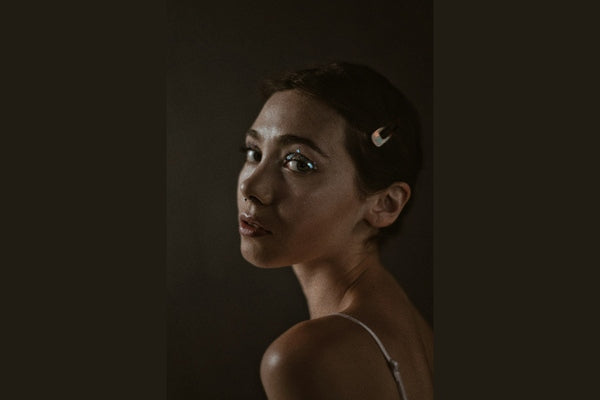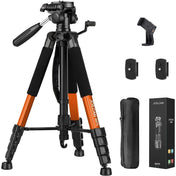Portrait photography is an art form that captures the essence of a person’s personality, emotions, and unique traits. Whether you are an aspiring photographer or a seasoned pro, knowing how to take stunning portraits can make a difference in your portfolio. Follow these tips to enhance your skills and take your portraits to the next level, all while effectively using your Micro Four Thirds camera.
Understanding Your Camera Settings
Before diving into portrait photography, it's crucial to familiarize yourself with the camera settings that will help you achieve the best results. Using a Micro Four Thirds camera can be a significant advantage due to its lightweight design and versatility. Here are some fundamental settings to consider:
1. Aperture
The aperture controls the amount of light entering your camera and affects the depth of field. A wider aperture (smaller f-number) like f/1.8 or f/2.8 will create a beautiful background blur, making your subject stand out. For full-body portraits, you may want to use a slightly smaller aperture to keep the entire subject in focus while still softening the background.
2. Shutter Speed
Shutter speed is essential to ensure your images are crisp and devoid of motion blur, especially when working with live subjects. A good rule of thumb in portrait photography is to use a shutter speed faster than the focal length of the lens you are using. For instance, if you’re shooting at 50mm, aim for a shutter speed of at least 1/50s.
3. ISO Settings
Setting the right ISO will help you achieve optimal exposure. A lower ISO setting (such as ISO 100-400) is ideal for bright conditions, while a higher ISO can be useful in low-light situations. Remember, higher ISO settings may introduce noise, so try to keep it as low as possible while still getting a well-exposed shot.
Choosing the Right Lens
Choosing the right lens is key to capturing breathtaking portraits. A Micro Four Thirds camera offers a range of lenses that excel in portrait photography:
- Prime Lenses: These lenses have a fixed focal length and are often known for their sharpness and clarity, making them perfect for portraits. A 25mm or 45mm lens will provide great results.
- Telephoto Lenses: A telephoto lens helps compress the background, which can lead to more flattering portraits. Lenses ranging from 75mm to 200mm are great for closer shots with a beautiful background blur.
The Importance of Lighting
Lighting plays an essential role in portrait photography. It can drastically change the mood and feel of your images. Here’s how to utilize lighting effectively:
1. Natural Light
Shooting outdoors during the golden hour—shortly after sunrise or before sunset—provides a soft, warm natural light that is perfect for portraits. Ensure your subjects are positioned with the light on their face for a radiant effect.
2. Diffused Lighting
When shooting indoors, try using soft diffused light, which can be achieved by placing a sheer curtain in front of a window or using a softbox. This will help reduce harsh shadows and create a more flattering look.
3. Use Reflectors
Reflectors can bounce light onto your subject, filling in shadows and adding depth to your portraits. You can purchase a reflector or create your own using materials like white cardboard or aluminum foil.
Posing Your Subjects
The way you position your subjects can greatly impact the outcome of your portraits. Here are some tips for effective posing:
1. Confidence is Key
Encourage your subjects to feel confident and relaxed. This can be achieved through casual conversation or making them feel at ease during the shoot. Having them do a test pose can also help break the ice.
2. Find the Angle
Finding the right angle can make all the difference. A slightly elevated angle can flatter facial features, while shooting from below may emphasize certain traits but can be less flattering overall. Experiment until you find the angle that works best for each individual.
3. Body Language
Pay attention to body language. Encourage your subjects to angle their bodies slightly away from the camera, which can create a more flattering silhouette. Subtle shifts in head and hand position play a crucial role in creating a natural and relaxed look.
Building a Connection with Your Subjects
Portrait photography isn’t just about the technical aspects; it's also about creating a connection with your subjects. This will allow you to capture their true essence. Here are some strategies to consider:
- Engage in Conversation: Ask your subjects questions about themselves, their interests, or their life. This can encourage genuine smiles and emotional expressions.
- Incorporate their Passion: If your subject has a hobby or interest, consider incorporating it into the shoot to capture their personality more fully.
- Give Direction: Sometimes, subjects may need gentle guidance on how to pose. Offer them clear instructions, but also allow them to be themselves.
Editing Your Portraits
After capturing stunning shots, the editing process is where you can truly elevate your portraits. Here are some tips to keep in mind:
1. Use Editing Software
Editing software like Adobe Lightroom or Photoshop can enhance your portraits dramatically. Start by adjusting basic settings like exposure and contrast, then move on to more detailed edits like retouching skin and enhancing colors.
2. Focus on Skin Tones
When editing, be mindful of maintaining natural skin tones. Over-editing can lead to an artificial look, which detracts from the quality of the portrait. Use tools like the HSL panel in Lightroom to adjust skin colors without sacrificing authenticity.
3. Crop and Frame
Composition can also be improved during the editing stage. Don’t be afraid to crop your images to enhance the overall framing. Remember, the rule of thirds is your friend!
Sharing Your Portraits
Once you've completed your masterpiece, it's time to share it with the world! Here are tips on how to effectively showcase your portraits:
1. Social Media
Social media platforms like Instagram and Facebook are excellent avenues for sharing your work. Use relevant hashtags to increase visibility, such as #PortraitPhotography and #MicroFourThirdsCamera, to attract fellow photography enthusiasts.
2. Building a Portfolio
Having a dedicated online portfolio not only showcases your talents but also helps potential clients find you. Utilize platforms like Squarespace or Wix to create a professional website or use Shopify to pair your photography with products.
3. Networking
Participate in photography groups or workshops in your community. Networking can lead to collaboration opportunities and help you learn from others in the field.
Final Thoughts: Capture the Essence
Portrait photography is a delightful journey that combines technical skill with artistry and human connection. With the right tools, like your Micro Four Thirds camera, along with a deep understanding of lighting, posing, and editing, you can create stunning images that truly reflect the essence of your subjects. Remember that the beauty of portrait photography lies in its ability to tell stories, so keep practicing, experimenting, and most importantly, enjoy the process!











